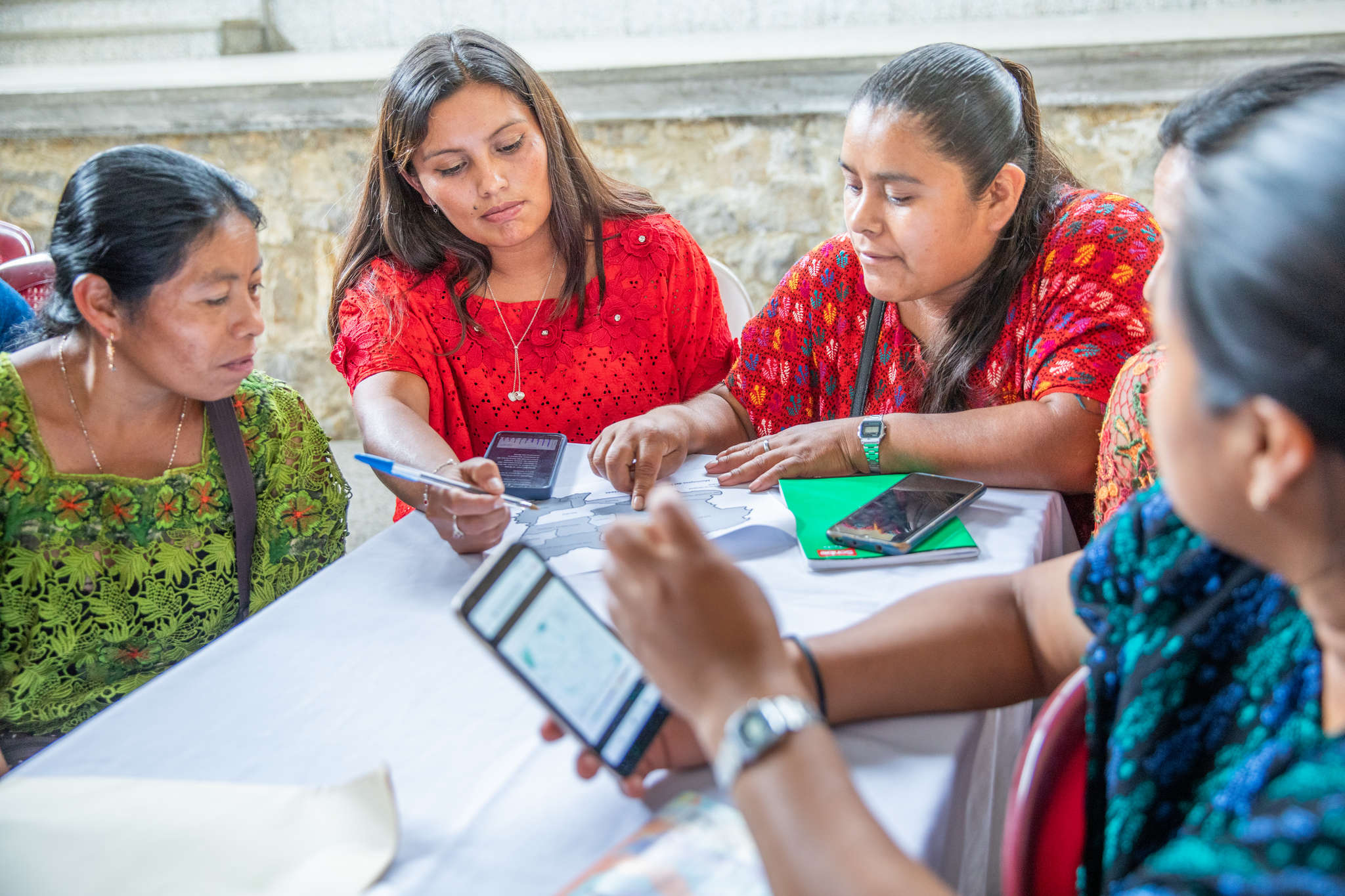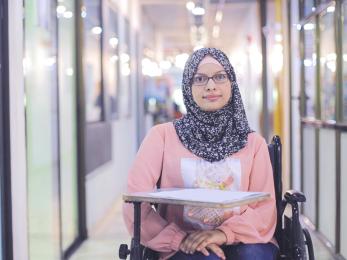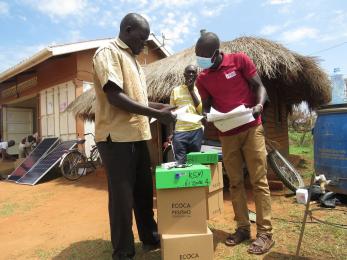Technologies to watch in 2020

It’s that time of year when everyone publishes either their “best of/worst of” lists, or their predictions for the new year; it’s almost a seasonal sport, if not an outright cliché. Still, I’m not one to let an easy opportunity for a bit of interesting content to pass me by, so here we go…
I posed this question to the Mercy Corps Technology for Development (T4D) team: What technologies do you think are going to have significant impact on humanitarian and relief work in 2020? While the responses were divergent, they indicated broad interest and anticipation regarding how emerging technologies can advance impact delivery in the humanitarian relief and development sector. Here’s a synopsis of the responses, presented in no particular order of importance.
Low cost renewable energy
Low-cost renewable energy — solar in particular — is taking the developing world by storm. Last year, small panels seemed to be everywhere we visited in the field, powering not only mobile phone chargers, but also home lighting and other high-utility tech. Networks of vendors and wider ranges of choices are entering the market, along with inventive financing schemes. We think this tech will be deployed even more widely in rural and vulnerable communities in 2020 and non-grid based energy will take on a substantial role in addressing the energy access gap. Team this up with a breakthrough in affordable high capacity battery technology and we’d be on our way to achieving the target of SDG 7: “Ensure access to affordable, reliable, sustainable and modern energy for all.”
AI/ML
Artificial intelligence (AI) and machine learning (ML) are enjoying a lot of buzz in the tech world, and the NGO space is no exception. While Mercy Corps and our peer agencies are still developing their skills in this field, we see big demand for high level analysis and data-driven decision-support algorithms. With growing access to expert users and third party vendors, this technology will likely make significant gains in 2020. One subset of this field bears singling out: Big data analytics of weather/climate. There are a lot of actors in this space and some of the results so far are impressive. If these prediction models become more accessible online and available to smallholder farmers, we will likely see positive impacts on agriculture and animal husbandry.
Low cost mobile devices
2020 will see accelerating emergence of lower-cost smartphones and feature phones which will help populations that are still, at this time, unconnected to communications and information services. Local providers, like MTN, have really gotten behind this and are pushing for cheaper handsets. It’s already happening in Rwanda, where a new phone production facility has started offering citizens low-budget phones for about $15/unit (Mara Phones) . Uganda provides another example, where low-cost smartphones are really gaining traction with the population. Getting connected to communication channels opens doors to a variety of services and is particularly important for farmers and digital agriculture. Increasing access to mobile tech will decrease the digital divide and improve productivity. The potential impact of this proliferation of mobile data devices becomes even more compelling when you consider our next point.
Mass satellite networks
Data from October 2019 shows global Internet penetration at around 58%. The majority of the populations not included in that coverage are in the developing world. Is 2020 the year that we make significant progress towards closing that gap? Mass satellite projects may hold the solution. By the end of the year, SpaceX’s Starlink will have 720 satellites in orbit; their broadband service is slated to launch in the second half of 2020. Competitor OneWeb hopes to launch over 600 satellites during the year and plans to open their network for services before year’s end. Even more ambitious is Amazon’s Project Kuiper, which seeks to create a mega-constellation of more than 3,600 satellites to achieve their “goal to serve tens of millions of people who lack basic access to broadband internet.” While Project Kuiper has yet to launch, they just opened a 219,000 square foot research facility and are on a hiring spree. When you combine widespread access to Internet service with low cost mobile devices (discussed immediately above), some interesting things will start to happen.
AR/VR
2019 proved that augmented reality (AR) and virtual reality (VR) are here to stay. Multiple programs begin testing VR, in particular, in field settings and found value in the tech. 2020 will be the year this tech gets traction to scale as relevance is advanced from the lessons learned and the skills developed with past programs. We see uses in training, education, psychosocial therapy, and cultural awareness.
Blockchain
Richard Brown, writing in Forbes recently, opined “blockchain’s ‘Troughs of Disillusionment’ are really the ‘Trenches of Deployment’.“ While that may be true in the fast moving worlds of finance and trade, things are moving a little slower in the aid sector. That said, things are moving in the right direction. 2019 was a year of preliminary trials and growing enthusiasm. 2020 will see blockchain gets its first major wins at scale in the sector. Cash transfer programming and direct aid are the programming areas getting a lot of attention these days. Mercy Corps, Oxfam, Red Cross (Norway) and WorldVision are among the major players running trials and looking to scale cash transfer programs that use a mix of digital currencies (or tokens) and the blockchain. WFP, meanwhile, is pushing hard to refine the Building Blocks model. Additionally, agriculture product provenance and traceability are likely to be big topics this year, as blockchain and low cost sensors combine to make supply chains more transparent.
Digital currencies
You knew there was no way we’d get to the end of this without some mention of Libra, didn’t you? Mercy Corps remains hopeful about digital currencies in general, and stablecoins, like Libra, in particular. Having access to a low cost, low volatility, widely accepted digital currency would be a game changer for low-income communities and vulnerable populations in many parts of the world. Will 2020 supply that valuable tool for financial inclusion? We think it will. The question is, will it be Libra or perhaps a combination of central bank issued digital currencies?? All that said, our interest in this field extends beyond Libra and stablecoins. We also see value in crypto tokens, particularly in evoucher contexts, and in the possibilities for community currencies. While the existence of a usable coin alone is not enough (it takes an ecosystem!) when you factor in our predictions for local cost mobile data devices and increasing connectivity, you can start to see how this may indeed be transformative.
Well, that’s our list for 2020, or at least, our list at the moment! The rapid pace of technological innovation and evolution assures only one thing: Things change — often in unpredictable ways.



